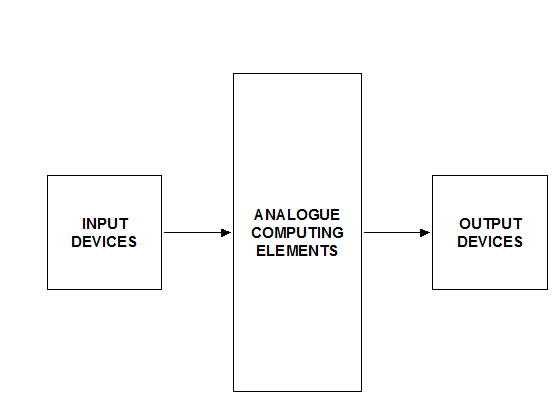ANALOGUE COMPUTERS
A computer is basically a problem-solving device. In aircraft radio systems the problem to be solved is concerned with navigation, in that given certain information, such as range and bearing to a fixed known point, steering commands need to be computed to fly the aircraft to the same, or some other fixed point.
Since the input and output information is continuously changing during flight, analogue computation provides an obvious means of solving the navigation problems.
A block schematic diagram of an analogue computer is shown in Figure.

The input devices are radio sensors such as VOR, DME, Omega, ADF, Doppler, Loran, Decca, ILS, and non-radio sensors such as the Air Data Unit and Inertial Navigation System. The output of such sensors will be electrical analogues of the quantities being monitored. The electrical signals contain the necessary information needed to solve the navigation problem, the solution being achieved by the computer.
The computer consists of a variety of analogue circuits such as summing amplifiers, integrators, comparators, sine cosine resolvers, servo systems, etc. The patching network determines the way, in which the analogue circuits are interconnected, which will be such as to achieve the required outputs for given inputs.
There is a disadvantage of analogue computers in that different patching is needed for different applications. Thus aircraft analogue computers are purpose built to solve one particular problem and as such usually form an integral part of a particular equipment.
This lack of flexibility, together with limited accuracy and susceptibility to noise and drift, has led to the introduction of digital computers, made possible by integrated circuits. Even so, the analogue computer, or rather analogue computing circuits, are still extensively used because as stated above, the sensors produce analogue signals.